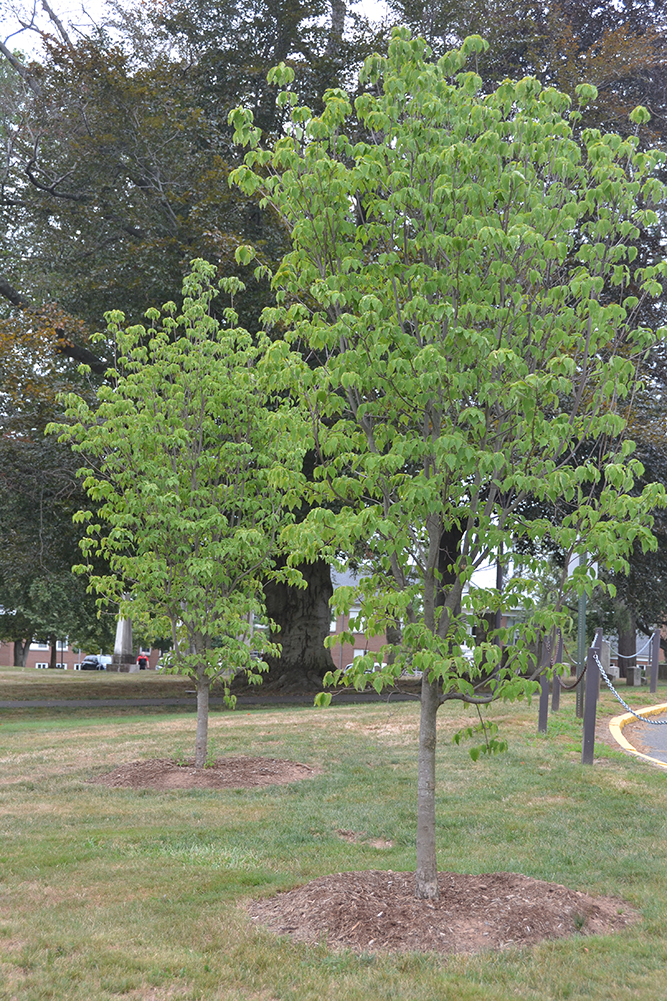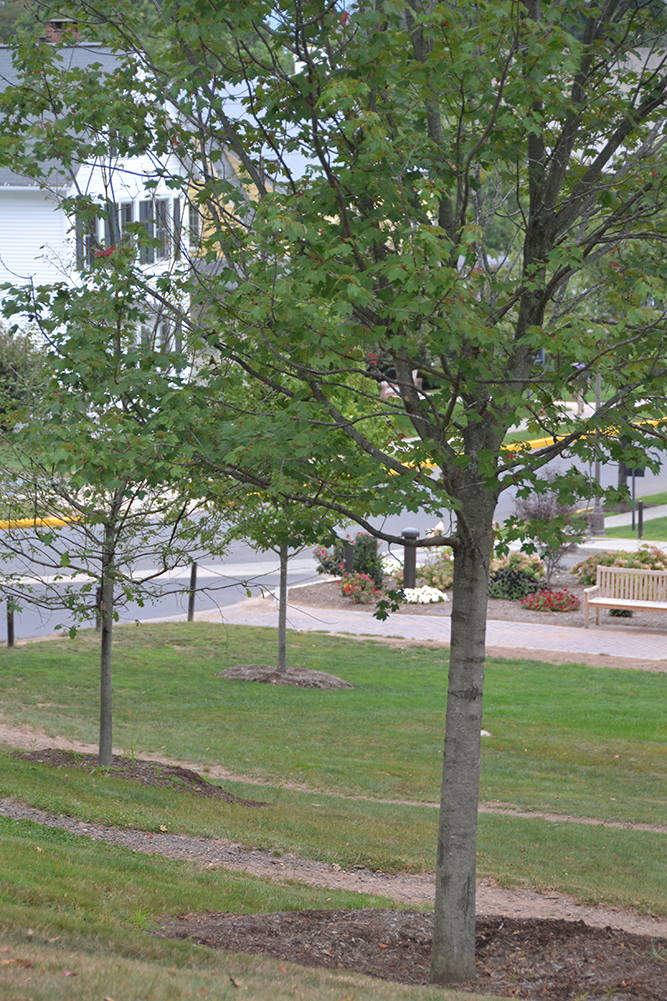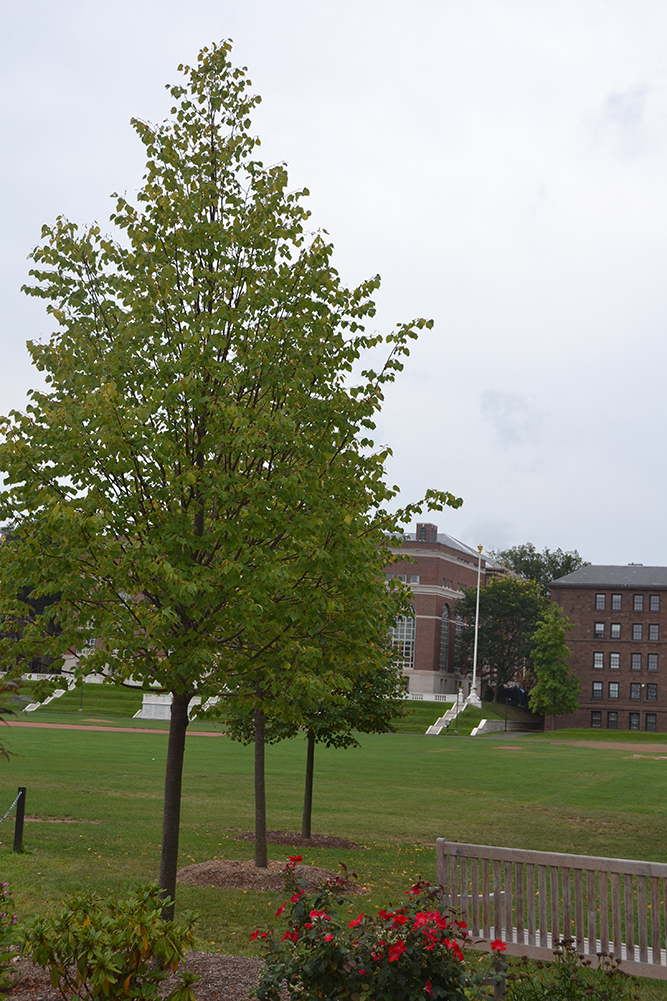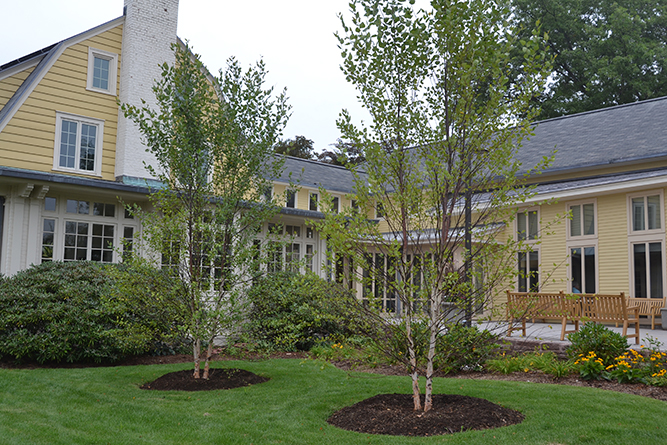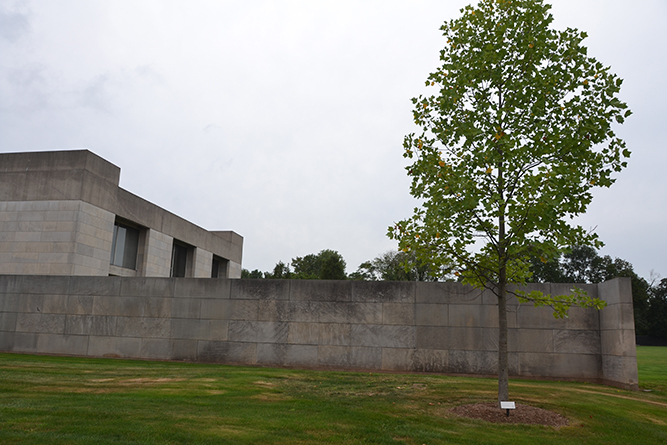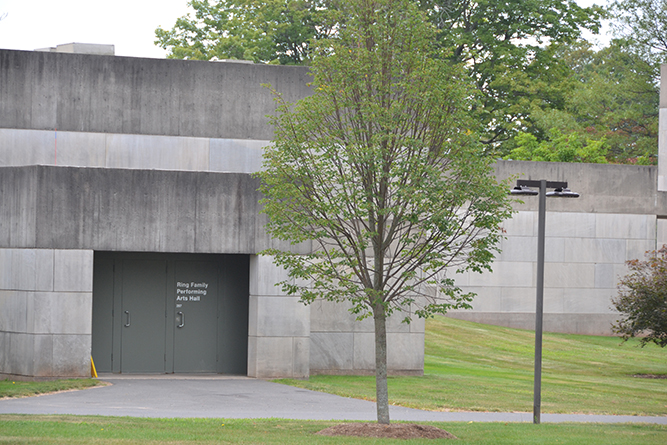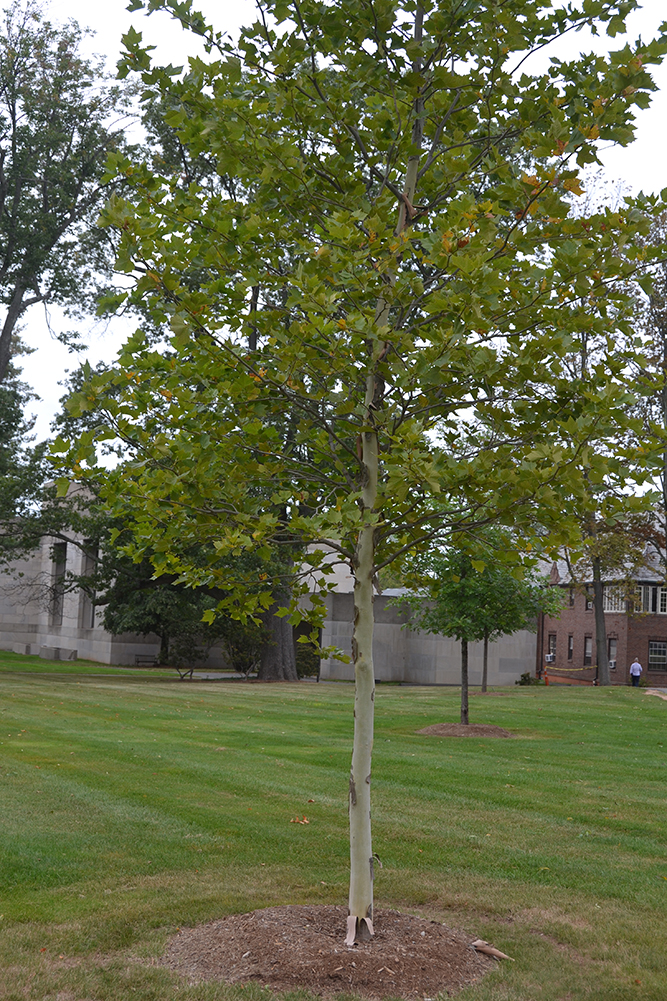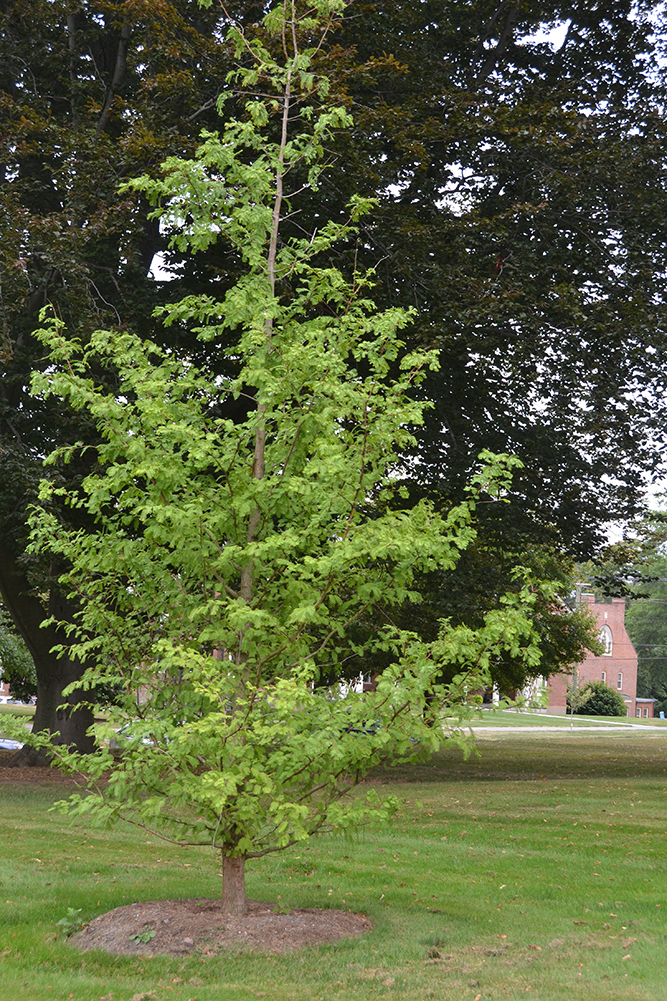Staff Spotlight: Borman Planting Trees for Wesleyan’s Next Century
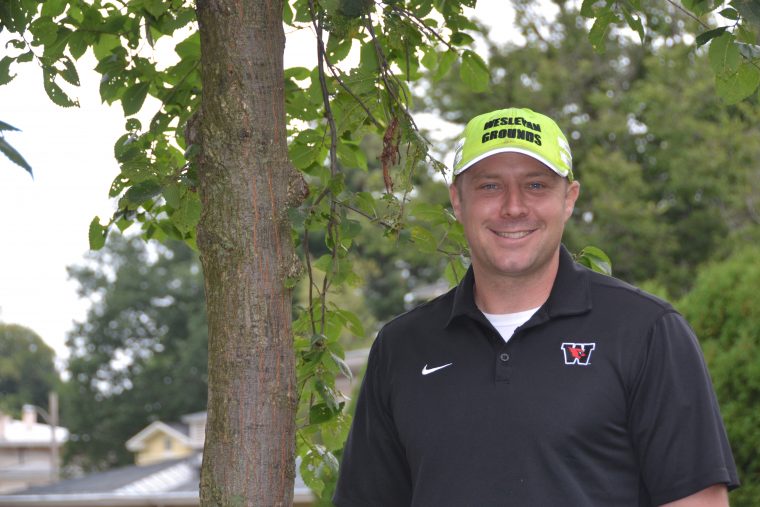
In this Q&A, we speak with Rob Borman, grounds manager for Physical Plant.
“The trees we are planting this year are creating the face of Wesleyan 100 years from now,” Borman says. Offering a guided tour of the central campus, he noted recent plantings, the decision process behind those choices, and the history of what felled any previous trees on those spots.
He also focused on present details, taking note of the health of the foliage—color and thickness—as well as any recent stressors, like extreme weather or insect-related events, which may be affecting these future giants of Wesleyan.
Q: When did you become the grounds manager?
A: I became the grounds manager in October 2014. Prior to this, I was in facilities maintenance, focusing solely on athletics, including event preparation and set-up. However, I’d been forming my impressions of the entire campus, even then.
Q: What was first on your list?
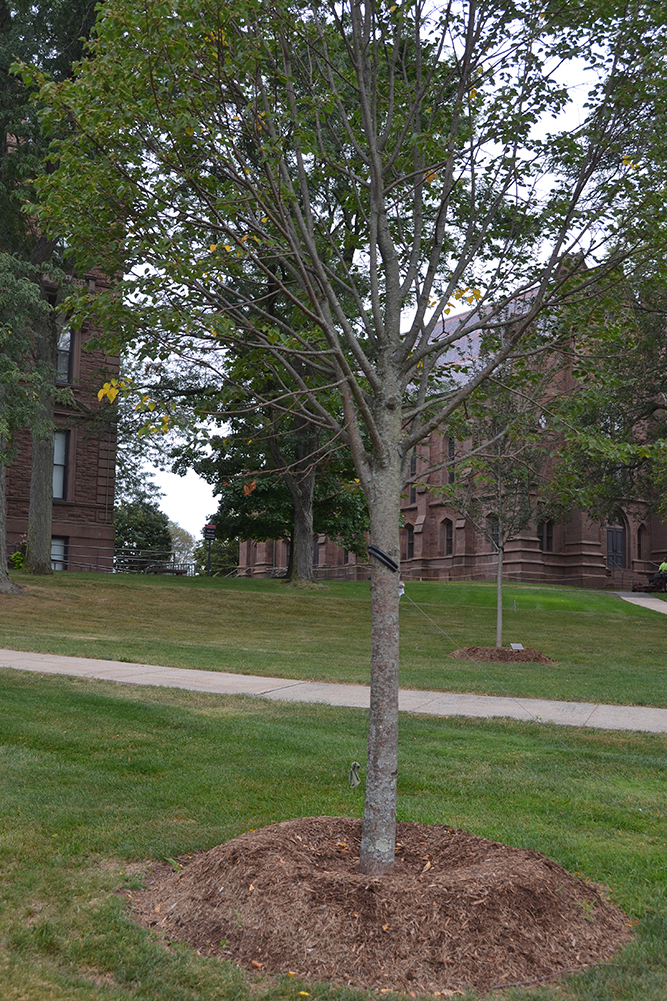
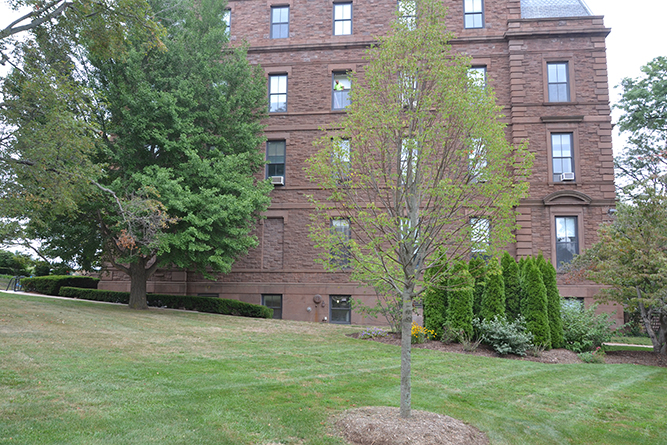
A: Wesleyan’s iconic College Row. We have this beautiful New England campus, but what was obvious from the street was a huge absence in the center of the lawn. Why would we have all these beautiful trees everywhere except the middle? I started asking around—did we need that space in the trees for annual events? Instead, I learned that we’d had trees succumb to Dutch Elm disease.
Q: What, then, could take their place? What considerations went into filling this gap?
A: I researched a few varieties of new hybrid elms, less susceptible to the disease. I also tried to incorporate feedback from people who’ve been here a long time before we took action. “We don’t have a lot of different fall colors, mostly just yellow”—that was something I heard. So I thought, let’s try some red oaks, some red maples. It was an opportunity to improve.
Q: How do you decide what size sapling to start with?
A: We were looking at the new plantings in terms of how they’d look next to the mature growth. Trees are measured by the width of their trunk at a person’s chest height, and I wanted our new trees to have impact. We ended up getting between four-inch and six-inch trees. These will start to fill in a lot faster than the smaller ones we planted in other places.
Q: So you decide kind and size. How do you decide where to plant them?
A: I spent some time with a librarian to see what campus looked like way back when, particularly in front of Olin, and it had some beautiful elms, majestic. Alumni sometimes weigh in, like one who remembered cherry trees near the observatory. You have to look at the nearby sidewalks and buildings, considering how big the tree will be at full growth. I check with University Relations—do they have annual events in the space that the trees will impact? I also check with Public Safety to let them weigh in.
Q: After College Row, what was next on your list?
A: Foss Hill is another focal point of campus—and so many of those trees are getting past their prime, especially the maples. You can really see that if you look up at the canopy; the foliage is kind of thin. We’ve lost a few—about three or four in the past two years. I bring a tree contractor out before we do any trimming, but if something is wrong, we want to know and we’ll fix it. During Spring Fling, we got a call from Public Safety; a lot of limbs were hanging down, so we came out here and roped off that tree until we could fix it. You don’t want to cut a tree down; it gives a lot of shade. There was a huge oak tree there on the right side of Foss HIll; it was hit by lightning last year and split right down the middle. We had to cut it down; we had no choice. I always put a sign explaining what we’re doing when we cut down a tree.
Q: So how do you mitigate these losses to age and natural events?
A: We’re trying to get ahead of it by planting some trees now. But another consideration to planting on Foss is the observatory: On the hill, we want the big presence the oaks provide, but at the top, we want big foliage—but not so massive that they’d be interfering with what the Astronomy Department is doing.
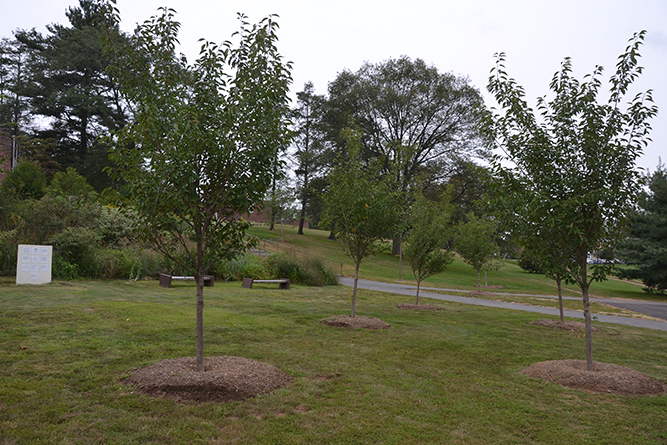
We framed Foss Hill with red oaks and red maples, so we have color in the fall—and lots of shade. Then towards the top, we’re continuing with ornamental trees. We added a couple of dogwoods this spring, and it worked really well: they were in flower during Commencement. And I was thinking, what else can we do out here? Commencement is such a big day.
Q: And how about the alumnus who wanted cherry trees?
A: He had been taking a Google tour of campus and called to say, “Oh, there used to be all these weeping cherries on the top of Foss Hill.” I know we had to take one down when I first started. It was toward the end of its life, but cherry trees are beautiful when they’re in flower. I thought, okay, this is an opportunity—maybe we can return them to this area. So we planted Kwanzan cherry trees right in front of the WestCo site. They should be blossoming when we’re sitting out there for Commencement. I was thinking of the tour route, too. The tour is the first impression people get of Wesleyan. I want everyone to feel at home when they first visit—and the trees of Wesleyan are such an important part of that.
